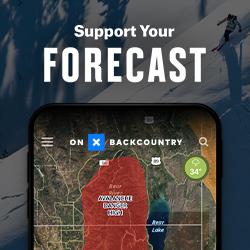Our snowpack currently has multiple PERSISTENT weak layers, making conditions tricky. A single wrong turn onto a 30-degree slope could put you in serious trouble.
The December facets continue to be active, particularly in repeater paths. We have seen activity on the January NSF layer that was formed during the long dry spell at the end of the month.
There is now a new PERSISTENT weak layer sitting both below and maybe above a temperature crust created by the extreme warmth in early February. This layer has become increasingly reactive in the last 48 hours, as new snowfall has added enough weight to form a slab. Where the wind is driving this slab, avalanches are highly connected.
East and Southeast-facing slopes are becoming especially active, with wide propagation seen in recent large avalanches on Raymond, Temptations, Circle Awl, and Toots to Boots. This is notable because SE-facing slopes are typically safer this time of year, but not right now.
Today, I experienced numerous collapses and saw many remotely triggered avalanches. The good news? Despite all the new snow, it had enough density to provide great turns on lower-angle slopes. You don’t need to be in avalanche terrain to find good skiing.
Long story short, it is a very complex snowpack, and the only solution when it gets this tricky is to AVOID the problem. Ski low-angle terrain that isn’t connected to larger slopes above if you're on aspects with a Persistent Weak Layer. See below for my thoughts on South and Southwest.



